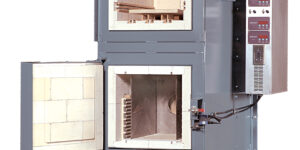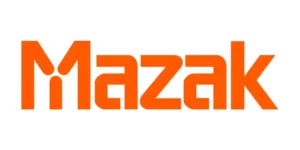POINT-OF-USE: CUTTING OVERHEAD EXPENSES IN TOOLING AND SUPPLIES
With the incredible pressure to gain efficiencies and cost savings wherever and whenever they are available, David Simbari of Supply Pro examines how even small manufacturers can benefit from point-of-use applications.
Posted: September 28, 2011
With the incredible pressure to gain efficiencies and cost savings wherever and whenever they are available, even small manufacturers can benefit from point-of-use solutions.
Automation has always been at the center of manufacturing to create efficiencies, speed production and improve worker productivity. Though it has been embraced in the production process, utilization of automation for the reduction of expenses related to tool and supply usage and distribution has lagged.
The global recession has placed incredible pressure on manufacturers to gain efficiencies and cost savings wherever and whenever they are available. Though indirect materials like tooling and general maintenance, repair and operations (MRO) might only be two to four percent of the manufacturing cost, they are now a prime target for optimization practices through the implementation of point-of-use automation to control and track materials usage.
WHAT IS POINT-OF-USE?
Until now, these materials have been managed in one of two ways – central crib and open stores. When materials are in a central crib there usually is a 15-20 minute “walk” to the crib, with coffee stops and various pit stops along the way. At the crib window materials are distributed by an attendant and transactions are recorded manually, and neither activity is adding any value to the material or production process.
Another method is the use of open stores, where employees have access to whatever they want, whenever they want, regardless of whether they need those particular materials, or have approval to use them. Inefficiencies abound with this method that include inaccurate inventory levels due to workers not writing down products taken, stock-outs, pilferage, and wasted labor counting and manually entering data information. Additionally there is no visibility for proper cost accounting. And, especially in this environment, free batteries can be hard to pass up. Without control there is no way to get these costs managed properly. But how to provide 24/7 control and increased efficiency without increasing labor? Enter point-of-use.
Point-of-Use solutions locate indirect materials inside a dispensing unit at the work cell for immediate 24/7 access with minimal productivity impact while recording and automating every transaction. Based on an individual user profile, access can be restricted to just the materials needed to perform the task. Independent business rules can automate management of consumable tools and supplies as well as full management for check-in and check-out of shared tooling such as drill motors, torque wrenches, laptops, etc.
Productivity is gained the moment the systems are implemented by reducing travel times and consumption behavior changes immediately through greater accountability to the user. Additionally, since a full accounting for materials is available from any web-enabled device, automated reordering can occur when minimum levels of materials are reached and transactions can be tied back to existing ERP systems. Thus preventing stock-outs and potential line downtime and all the associated backend costs.
NO NEED TO BE LARGE TO GET LARGE BENEFITS
Point-of-use is not only applicable within large, multi-location organizations. It can be particularly cost effective in smaller operations of even 50 production employees. Smaller companies must do more with less, and in these environments automation is the only way to achieve efficiencies and savings.
Iafrate Machine Works Ltd., a custom jobbing, machining, tool and die and fabricating facility based in Southern Ontario is a prime example. When Iafrate first installed point-of-use solutions in 2004, they had 120 employees working three shifts around the clock and saw immediate return on the investment. The system collected and managed all device transactions, in addition to all activity related to automated reporting and ordering, inventory control, accurate cost allocation and aided in the company’s efforts to strive for “continuous improvements.”
But the story doesn’t end there. Prior to the economic downturn of 2008, Iafrate’s business consisted of 75 percent automotive and 25 percent tool and die work. Anyone who has read a newspaper knows what the recession did to the auto industry . . . and it almost took Iafrate down with it. The shop went from 120 plant floor employees down to just 30 in order to fulfill the orders that they did receive. With this skeleton staffing that Iafrate was forced to scale down to, their point-of-use systems became even more critical to keeping their organization functioning.
There was simply no room for an employee to be used for monitoring and distribution of materials. Automation was the critical element that had to be in place for materials distribution to keep the plant productive in the most efficient manner possible.
Between 2008 and 2010, Iafrate restructured every area of the company from the top down. As these changes were instituted in every major area, point-of-use systems were able to adapt as new programs were implemented. At this point, Iafrate has been able to double their employee base back up to 60 as production orders have increased, requiring second and third shifts again. They have weathered this most recent economic hurricane by looking at their business model from a different angle, making real changes to their structure and using the automation capabilities they already had in place.
“These automated dispensing solutions and ongoing software upgrades have been paramount to our continued emergence from the disastrous economic turn that occurred in 2008,” said Bruno Iafrate, owner, Iafrate Machine Works. “As our set-up volumes increase, our need for readily available tooling and MRO supplies is critical. These solutions make sure our employees have all of the materials they need, while adding efficiencies and greater cost controls as we increase production.”
Iafrate is just one example of the impact that point-of-use solutions can have within smaller manufacturing organizations. Generally, any organization that incorporates our solutions receives a return-on-investment within three to six months of implementation through reduced spend and improved productivity. By tailoring the systems to the organization’s needs and unique business rules, impact is swift for any size organization.
IT’S MORE THAN JUST ADDING A BOX FOR MATERIALS
There are many options for controlling indirect materials on the manufacturing floor, but this is more than just adding a vending machine to your operations. The device is but one element of a total solution. For ongoing return-on-investment for these solutions, they must be flexible enough to grow and adapt as the organization does the same, just as in the example with Iafrate.
A few principles that have been learned repeatedly from point-of-use applications include:
• Managing MROP for industrial manufacturers is never a simple matter. Complexity reigns supreme.
• The greatest value is achieved by focusing on the entire workflow process, not just the vending machine.
• Flexibility and adaptability in approach helps our customers realize the greatest value from our solutions.
REALIGNING CONTROL TO MANAGE THE RIGHT MATERIALS
When I meet with manufacturers, I will usually bring out a handful of candy in one hand and a handful of cutting tools in the other. I ask, “Which of these costs you more?” The answer is the cutting tools, of course. But in many organizations the candy and potato chips in the lunch room have better control than indirect materials that cost far more in both spend and productivity.
Incorporating automated dispensing solutions at the point-of-use realigns control to make sure the right materials are provided to employees and the right data is collected to gain further ordering and process efficiencies across the organization . . . now and going forward whatever the economic environment.










